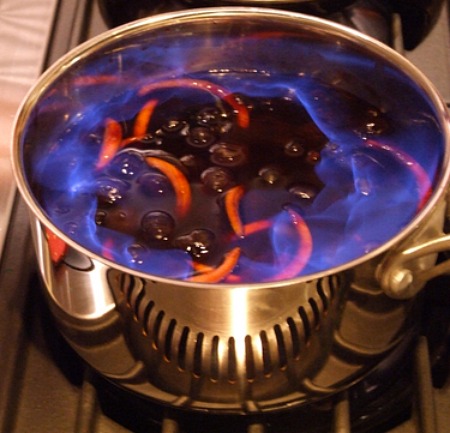Recreating historical recipes
September 23, 2017 by Darcie 
If you have ever leafed through an old cookbook, you’ve probably run across some recipes that sounded, well, less than appetizing. Antique books might have recipes for meats that you wouldn’t consider eating, and mid-century tomes feature many questionable ingredients encased in gelatin and called a “salad.” You probably wouldn’t think twice about making such dishes, but at Duke University’s Rubenstein Test Kitchen, it’s all fair game. There, staff make historical recipes from cookbooks, manuscripts and other materials in the David M. Rubenstein Rare Books & Manuscript Library.
The test kitchen doesn’t have a physical space; rather the librarians make the dishes off-site and share them with each other (and adventurous friends); then blog about the results. The project was conceived as a follow-on to a similar venture at the University of Pennsylvania, which aimed to re-create historical recipes from the 1600s to 1800s. The Rubenstein Test Kitchen picks up where that project left off, beginning in the late 1700s and working its way into the late 20th century.
Making these recipes is about more than just learning what dishes may have tasted like in times past, says Research Services Director Elizabeth Dunn. “Looking at foodways helps you understand exploration, trade, social developments, race, medicine, gender and history,” she says. “Just think about how the potato was important, or how abolitionists boycotted sugar because you couldn’t make it without enslaved labor in the Caribbean.”
Many of the dishes are difficult to re-create because the recipes contain vague directions, imprecise measures, or ingredients that no longer exist. Finding substitutes is part of the adventure, as is trying foods that have a high “gross-out” factor. Along the way, the staff has tackled a variety of different dishes, including a “sherif cake,” a boozy nut cake that dates to the late 1700s, a 1920s prune soufflé, and Cherries jubilee, a favorite of a former Duke University food services employee in the 1940s.
Photo of Cherries jubilee from RecipeGirl by Lori Lange
Categories
- All Posts (6940)
- Antipasto (2135)
- Author Articles (247)
- Book News (935)
- Cookbook Giveaways (983)
- Cookbook Lovers (257)
- Cooking Tips (109)
- Culinary News (299)
- Food Biz People (552)
- Food Online (791)
- Holidays & Celebrations (272)
- New Cookbooks (149)
- Recipes (1500)
- Shelf Life With Susie (231)
- What's New on EYB (133)
Archives
Latest Comments
- eliza on What foods do you look forward to the most for each season?
- kmwyman on Rooza by Nadiya Hussain – Cookbook Review and Giveaway
- Maryd8822 on The Golden Wok – Cookbook Giveaway
- Dendav on Danube Cookbook Review and Giveaway
- sanfrannative on Rooza by Nadiya Hussain – Cookbook Review and Giveaway
- darty on Danube Cookbook Review and Giveaway
- Atroyer7 on Danube Cookbook Review and Giveaway
- demomcook on What foods do you look forward to the most for each season?
- demomcook on Danube Cookbook Review and Giveaway
- Darcie on How cookbooks can help build resilience